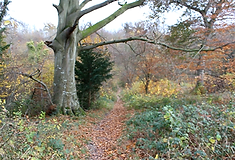Becca Case
A2 Media
Understanding camera work
Rebecca
The horror genre uses a wide variation of shots and movement in order to highten the tension created among the audience and therefore they will be on edge throughout the whole film. In many horror films close ups and extreme close ups are convetionally used as it creates more of an intimate feel with the audience increasing their terror.
The video on the right is a collection of various camera shots/angles and movements that are conventionally used in horrors. These include close ups, extreme close ups, long shots, establishing shots, wip pan, tracking, POV, high angle, low angle, zoom, pan.
High angle/ birds eye view shots are used in horror to show the antagonist looking down on the protagonist and making them seem powerless and vulnerable.
Close ups and extreme close ups can be seen as the most conventional type of shots used in the horror genre. They are used to emphasise the victims terror and show how their emotions change once they realise something terrible is going to happen. They are also used for the antagonist (demon,possessed child,spirit etc) to capture the detail on their face and usually used for numerous jump scares throughout the film. In trailers this particular close up/extreme close up of the antagonists face is near the end in order to scare the audience and entice them into watching the film.


Establishing shots are used to create the atmosphere in the film and to show the area or place in which the film is set. This shot usually shows a fairly normal setting such as house therefore this creates a sense of fear amongst the audience as they can relate to the setting highlighhting that this could happen to them. These shots could also show how desolate the area is for example the establishing shot in the Mama trailer is of the forest that the two girls were found in.


Long shots are used in horrors to create tension, they are usually used to show one end of the corridor to the other where there is either a figure standing or a locked door. This shot is sometimes used before a jump scare as the long shot uilds up the tension and puts the audience on edge. However it can also be used as an anti-climax therefore it will increase the fear of the audience as they wait for the jump scare but it does not come therefore they are releived of the tension so that when they will not be sure when the jump scare will happen.
Low angle shots are used to show the protagonist looking up at the antagonist, this low angle shot puts us in the position of the protagonsit and therefore we are just as fearful as they seem.
Hand held is commonly used in horror films to give a shaky feel to the film and creates a sense of reality. As the audiecne we feel more involved and increases our terror as we feel as though we are in the same situation and the characters.
POV (point of view) shots are used a lot in horror films particularly from the view of the protagonist as this puts the audience in the protagonists place and we are able to see things from the ways they see it. This can make the audience feel even more uncomfortable as they would feel as though the antagonist is directly coming for them.
Over the shoulder shot is a good shot to build tension and add suspense in a horror film. It is particularly used with mirrors and the reflection of the protagonist as it allows us to see what is happening as the character does. For example a well known use of over the shoulder shot is of a character looking into a mirror and seeing a figure in the reflection however when they turn around it is not there.
Canted angle is where the camera is on a tilt and suggests a sense of drama or madness, it can be used in horror to show a distruption occuring to increase the suspense and tension.
Eye level angle puts the audience on an equal footing with the character/s. This is the most commonly used angle in most films as it allows the viewers to feel comfortable with the characters. This shot can be used in horror enable the viewer to side with the victim as it emphasises the fear that this could happen to them.
Tracking/Panning is often used to show the protagonist being followed by the antagonist. In the conjuring a slow pan is used to circle the woman who is trying to establish the spirit in their house, this helps to establish the scene and builds suspense because we do not know what she is going to discover.
Whip pan is a fast movement of the camera to emphasise action. This is used in horrors to show something abnormal occuring or to highlight fear of a character.




